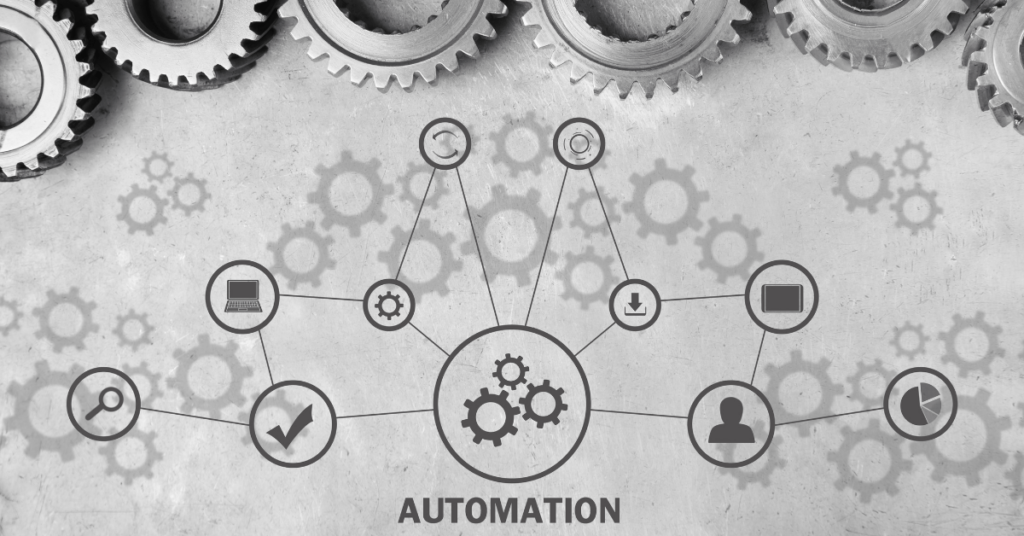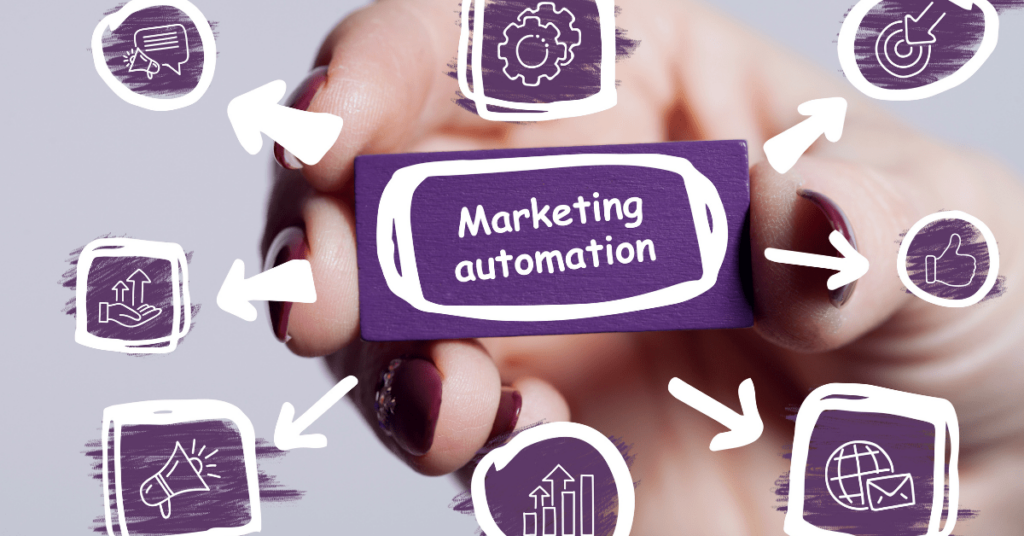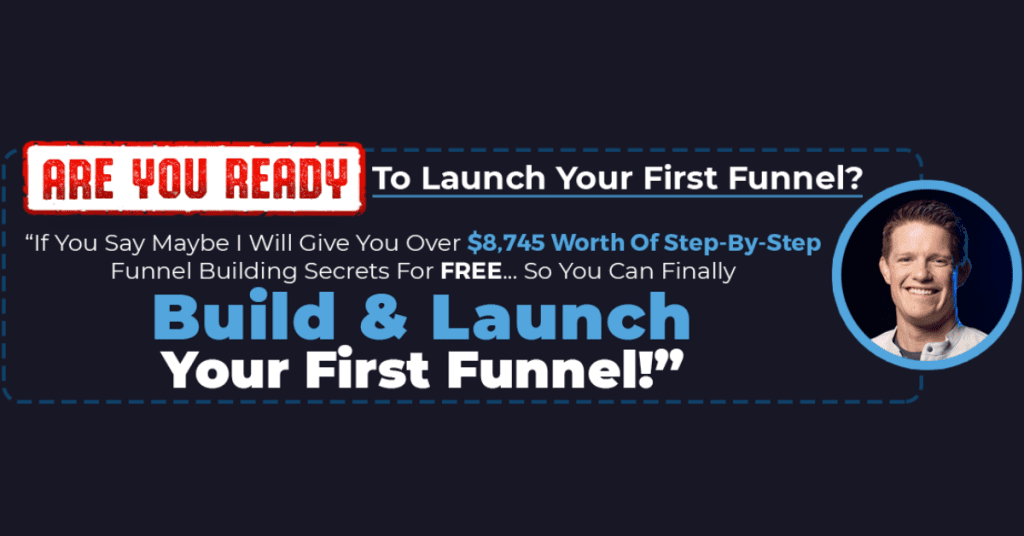Marketing automation is what marketers use to automate their marketing process to communicate with their leads and customers.
There are different marketing automation platforms out there and all are having a different speciality.
For new marketers, you should focus on what your goal is to choose the one easiest to use.
Today we will share how to implement marketing automation in your business. You will learn that marketing automation is not that complicated and expensive to create and launch.
We will show how you can create your marketing automation process from scratch using the marketing automation platform.
What is marketing automation?

Marketing automation is the process to automate recurring marketing and customer engagement activities. This is usually done by creating the process in software to manage different marketing campaigns.
Here are some examples of marketing automation processes:
- Onboarding email sequence when someone subscribes to your email list
- Regular email sequence to be sent out to nurture your leads
- E-commerce cart abandons recovery email
- Follow up with people that landed on your page but didn’t complete the activity.
- Webinar follow-up sequence to remind and share insights of the upcoming webinar
- Engage with your contacts that did not open your messages. You can clean these people out of your email list if they are not interested in your email.
From the examples above, all these marketing campaigns can be sent out automatically when the triggering event is matched. Regardless you are in what business or even a non-profitable organization, marketing automation helps to handle these recurring activities. And make sure it can reach the target customers on time.
Get Started Free With GetResponse 30 days Free Trial
Why Implementing Marketing Automation

If you are not implementing marketing automation in your business yet, you are wasting lots of your time and money doing it manually. There are so many different tools out there that are very affordable and easy to use to create your automation workflow.
Having the automation campaign in place can help to generate more leads and increase your revenue.
1. Service Your Target Customers Better

First of all, after someone’s contact details are collected from your lead generation process, it’s time for you to build relationships and nurture them to be your customers.
As your list grows, different customer groups will require different sequences to promote the relevant product to them. And also, to use different language to talk to their mind.
With the right marketing automation software in place, the software is able to decide to send a different sequence based on their response.
For example, you can have a list of 10,000 subscribers. And you are sending the same email sequence to all of them. However, different people will have different interests and feedback. Forcing the same sequence on everyone will eventually make some of them opt out of your mailing list. Or even being directed in the wrong direction.
Now imagine this, for the same 10,000 subscribers. You put them into the automation workflow with the same starting email. However, some might not be opening the email. You can resend the email to them or send the same email with a different email subject line after 24 hours and see if they open it.
And those who open and click the email will be going through another sequence. The automation workflow with the deciding matrix is the key service to sending the right message to the right audience.
Now you can see the difference. With marketing automation in place, no matter how big is the size of your email list, you can send the right person to the right response.
Readers will only read things that are relevant to them. By sending the targeted message to the group, you will have a higher open rate and also engagement rate.
2. Save Time and Money

If in your business there are some pre-qualification processes where you ask questions to segment your leads. This process can also be automated with a sales funnel.
You can have a survey funnel where you can ask them some common questions that you normally ask in the questionnaire or during the first meeting.
For example, if you are an insurance agent, commonly in the first meeting, you will ask about their background, insurance plan requirements, budget, basic medical history and so on. This is to help you to create a better plan for their needs.
However, this can be done beforehand. When potential customers reach your survey funnel through your online marketing campaigns. They showed interest in getting insurance, you can send them the survey funnel for them to answer the questions. With this, you can have the basic information before the first meetup. Not only that, but at the end of the survey funnel, you can have a simple suggestion of what they might need.
And after the survey funnel end, it doesn’t end there, they will be directed to two flow. The first would be software like Calendly to book an appointment for further discussion. And the next would be the onboarding email sequence and other email sequences to build relationships with them and provide value.
You see how we automate the entire pre-appointment and appointment-setting process with a sales funnel and email marketing follow-up.
All these repetitive tasks are handled automatically using a marketing automation tool.
You can then release your time for other more important tasks that requires your personal attention. It can be attending more appointments and closing more deals while the survey funnel brings in new leads and appointments automatically.
3. Scale Your Business Faster
It takes time for someone to know your business and your brand, trust you and then buys from you. Normally it takes up to 7 touches before someone makes a purchase.
Hence, you need to nurture them from a lead to a paying customer, and finally to a recurring customer.
If you are just starting out a new business or have a small team, it takes effort and manpower to do all these manually.
Not only that, but with the increase in your manpower cost, you may need to charge a premium price for your product or service to cover the cost.
This is why you need a marketing automation platform that will handle your lead generation process, lead nurturing email marketing process and finally, the sales funnel creation and ad campaign to bring in traffic.
If everything is set up correctly and optimized, you can just let it there and run automatically. Now instead of handling it manually daily, you can just launch and forget about it. New leads will not add a new workload for you.
And your job is still the same, to concentrate on closing more sales and developing your business on a bigger scale.
4. Pre-Qualify High-Quality Customer
Now, this is especially important if you are selling high-ticket products, you have no time to serve everyone.
When you are doing a lead generation campaign and offering free lead magnets, some might claim your freebie and follow you because they enjoy your content.
However, they might not be the right customer that will buy your product. And if you are focusing on following up with them, you will end up wasting your time and effort.
This is why marketing automation solution is important. You can pre-qualify your leads with the sales funnel and the follow-up email to categorize them.
By doing this, you can create a different sequence for people that are in the different sales funnel stages. AIDA: Awareness, Interest, Desire, Action.
Your sales team will only focus on closing the people that are in the Action stage. This will increase the success rate and simplify the closing process as they already thinking of getting your product or service.
There is less objection for them to your product or service. And for those in the Awareness, Interest and Desire stage, you can continue to nurture them with them email marketing campaign to bring them down the sales funnel until they are ready to buy.
How To Implement Marketing Automation?

Marketing Automation follows a simple logic. If X happens, then Y, else Z.
For example:
If someone completes the registration and makes a purchase, then send them the onboarding email sequence. Else if they complete the registration but didn’t make a purchase, send the soap opera sequence to promote the product.
Marketing automation workflows
For this guide, I will share using the software called GetResponse. I always use GetResponse for its simplification and workflow visualization.
You can create the automation workflow script in GetResponse with drag and drop by adding the elements in your workflow. This includes adding the particular event and how it should respond if what happens.
When building these scripts, you will have three types of blocks. Conditions, filters and actions.
Conditions
A condition element refers to a logic event where “If X happens”, then A or B. This is used to track whether someone did an action or not.
For example, whether
- Someone subscribes to your email list
- If they open your email
- If they complete the purchase
- If they added the item to their cart but didn’t complete the sale.
Then you can trigger certain actions.
Filters
With filters, you can narrow down your audience before an action is performed. They are usually used after the condition element and before the action element.
Examples:
- First 100 subscribers
- Only contacts who have a particular attribute
- Only contacts who are also on our other list
Action
With actions, you specify what you want to happen after a condition has been met. An action could be about sending a message (email, SMS, web push, etc.), waiting for a specific amount of time, and even tagging or scoring your contacts.
Examples:
- Send an email
- Move to another workflow
- Assign a tag
Marketing Automation Workflow Builder in GetResponse
Let’s look at different workflows that you can build.
For example, it can be a simple welcome message workflow with two steps.
When someone subscribed to your list of “premium users”, then send out the email.
Or a Webinar Promotion Workflow with 11 elements
When you send out the webinar confirmation email, you first tag them as registrants and then, depending on whether they clicked on the email, you will send them to a different flow. If they didn’t click, you can send them another email to remind them. Else if they clicked, you can continue to send them the trailer about the webinar.
Building The Marketing Automation Workflows Guide – Step by Step
To build a marketing automation workflow, you can either start from scratch or use a ready-made automation template.
Most automation workflow builder provides a template for you to start. You can use it as a starting point to build your template. Take it as the starting point for you to have an idea of how it works.
When building marketing automation workflows, like any other digital marketing campaign, you shall create different variants and split-test them to get the best automation workflow for your business.
Marketing automation examples
There are different marketing workflows that you can build for different marketing campaigns. Here are some examples of the workflow you can use.
1. Cart abandonment emails
If you are running an eCommerce business or had visited an online store before, you will most probably see experience this.
You saw something interesting and would like to make a purchase. However, after adding it to the shopping cart, for some reason, you didn’t complete the purchase.
As a business owner, these people are the potential customers that are very likely to make a purchase from you. They viewed your page, showed interest in your product and added to the cart. However, they did not complete the purchase may be they are rushing for another task or chasing the train.
Hence, these are the low-hanging fruits that you can close and convert easier compared to new customers.
By just being able to follow up and convert them, you will see a huge increase in your online store revenue. And this can be done automatically with email marketing automation.
The software will track the store visitors’ behaviour and send out emails automatically to those who had not completed their purchase.
In the email, will include the product that they added to the cart but didn’t complete the purchase. And you may also offer some incentive and create urgency for them to complete the purchase.
It can be an exclusive time-limited one-time discount like “10% off if you complete the purchase within the next 24 hours”.
This does not only apply to email marketing flow but even to other marketing channels like retargeting paid ads or SMS messages.
Welcome email series
Welcome emails are the first touch that you have with a new subscriber. After someone subscribes to your email list, this is the first email sequence that you send to them. And it is the determining factor whether they will stay subscribed or opt out from your email list.
They are so effective as you are sending the email to someone who had just shown interest in your content and subscribed to your list. This is the first email sequence in which you explain to them what to expect from your content.
Also, it serves as a good platform to set your stage and provide value to them.
A welcome email series is very important for every business, especially eCommerce businesses to offer a welcome discount for them to complete their first purchase.
Email Newsletter Sequence
Another popular marketing automation workflow is the email sequences that you send out automatically when they did something.
An email sequence will have a set of emails that you send out after they did something. For example, after they subscribe to your webinar or your product launch event, you can send them the email sequence to remind them about the upcoming launch.
And everything is done automatically based on their reactions.
Final Thoughts – What Is Marketing Automation and How Does It Work?
Building and implementing marketing automation can be easy if you have the right software in place. You can create it easily without requiring a large team or budget.
For instance, you can take a day or two to sit down and write a huge batch of marketing emails. And then upload it to your autoresponder software. And finally, create the automation workflow for it to be sent out once triggered.
The beauty of marketing automation is that you can build it once and get it to work all on its own. And since it’s a repetitive task, why not let the software do it for you?
And of course, although it’s an automated process, you can have the personalization email for your customers.
No matter if you are a solopreneur, a local business or a big organization, you can still implement marketing automation in your business. Why not have a virtual staff that works 24/7 for you, and not complain or ask for a raise?
After explaining everything about marketing automation, you definitely should start it earlier.
Here are some resources for you to start building it.
First, the marketing automation workflow builder. You can sign up for a free Getresponse account for 30 days and start building your marketing workflow.
Next, grab the free ‘Copywriting Secrets” book to learn how to write a better email. It’s all about writing persuasive emails to build rapport and convert your customers.
So, let’s start now.





